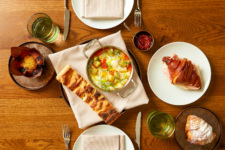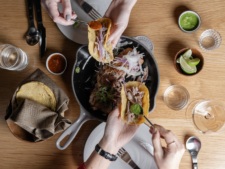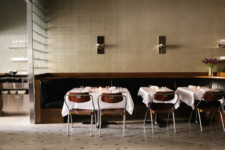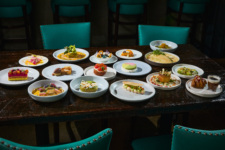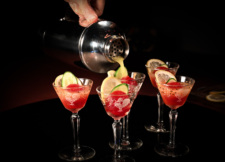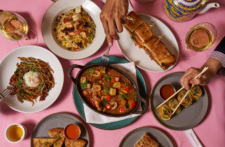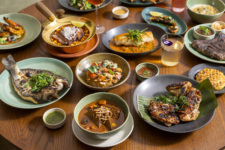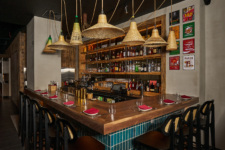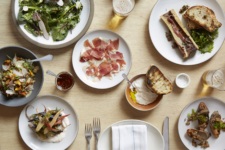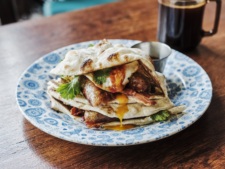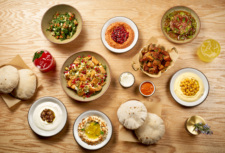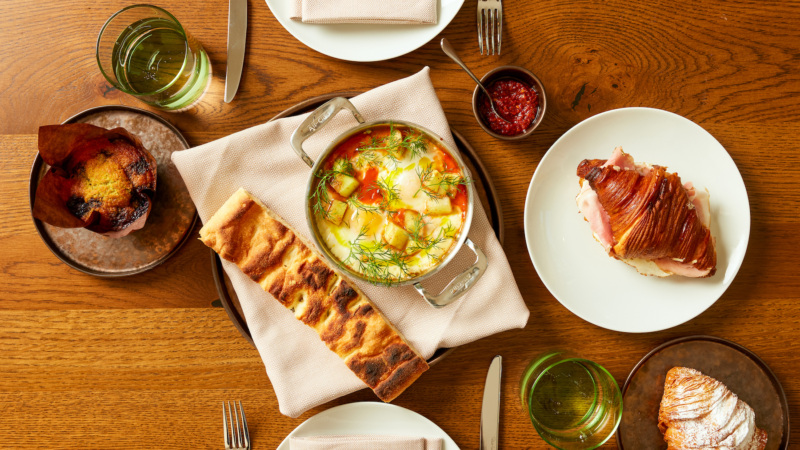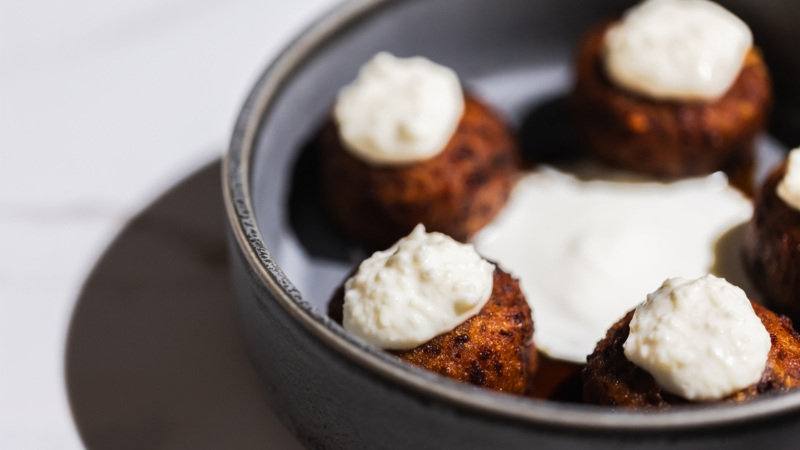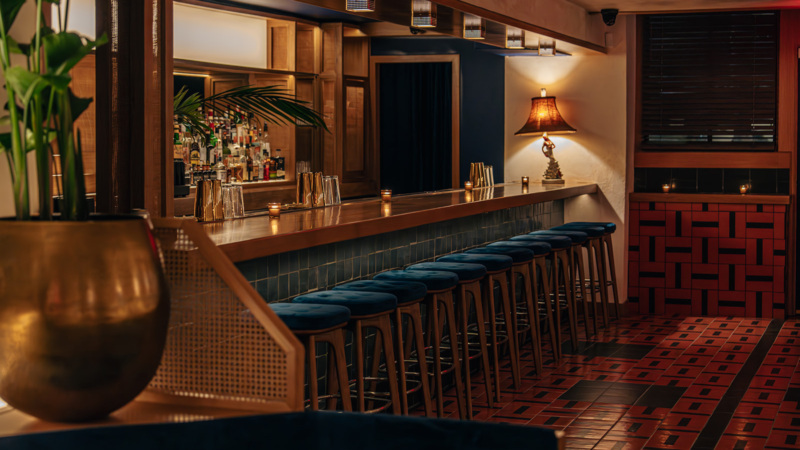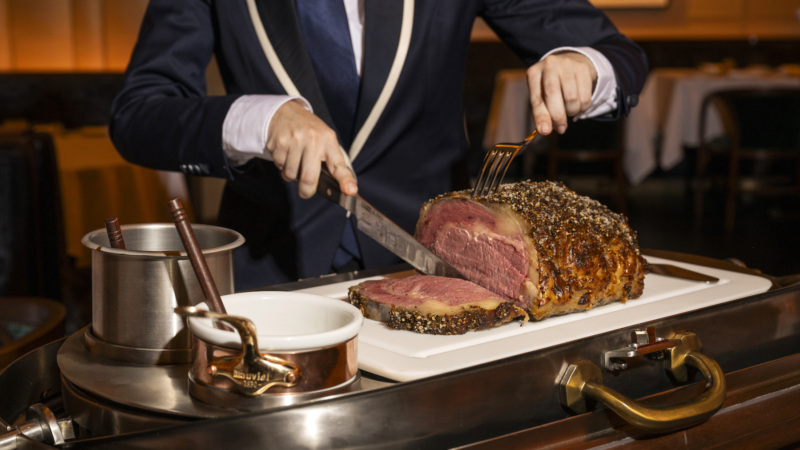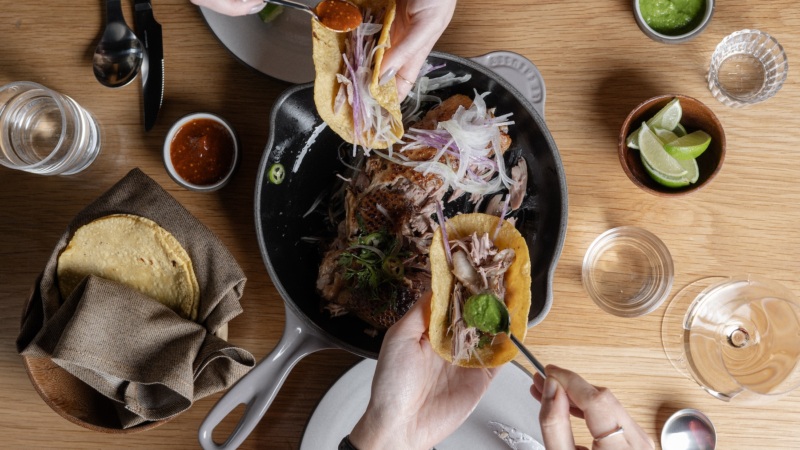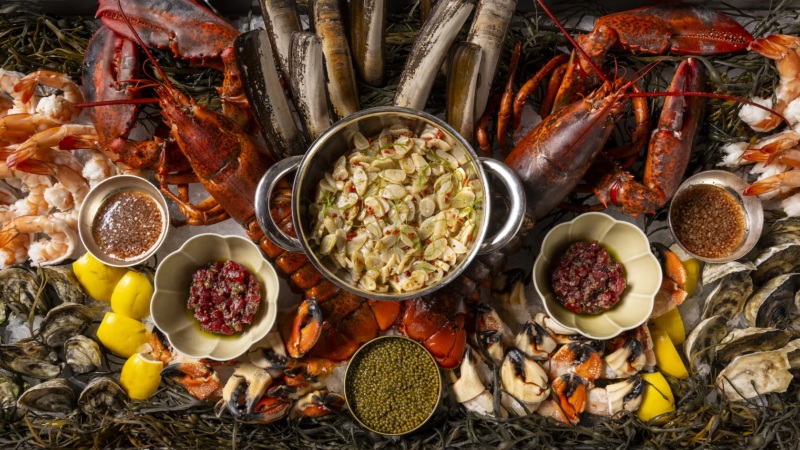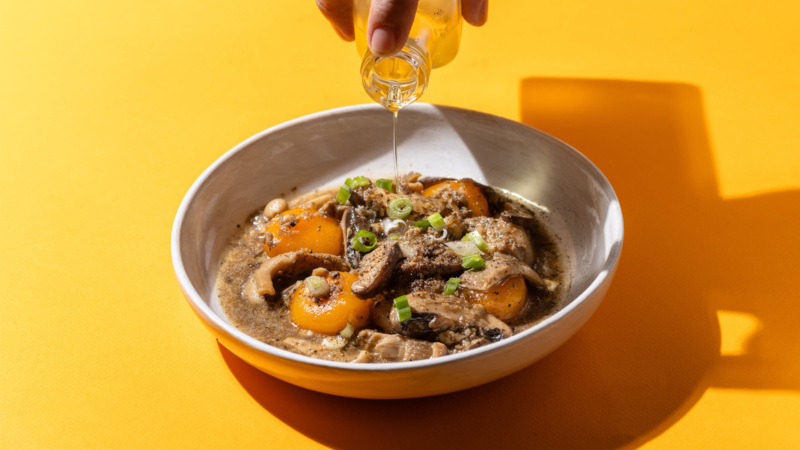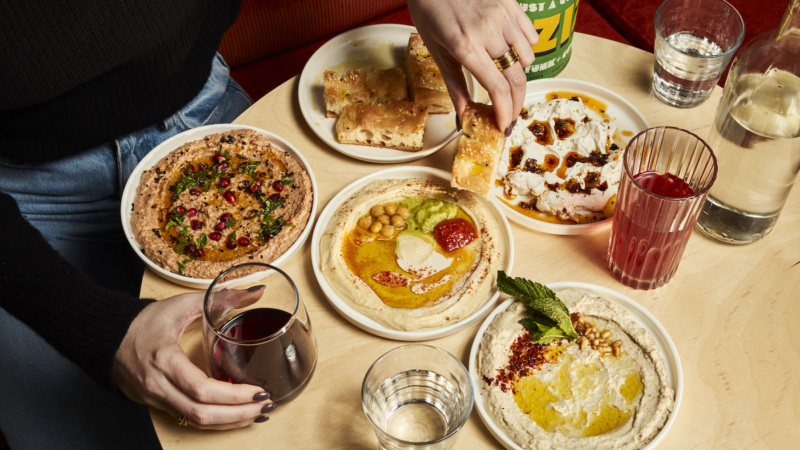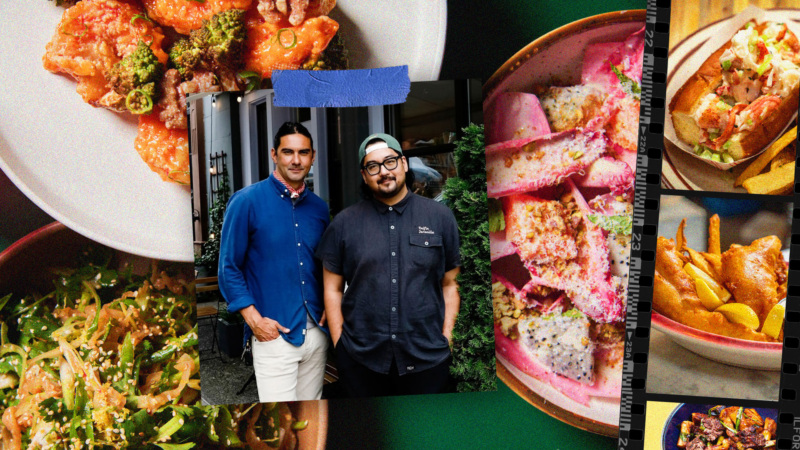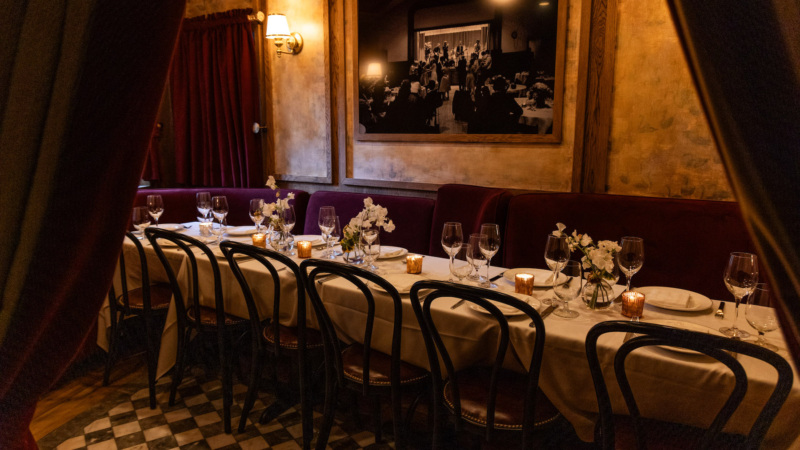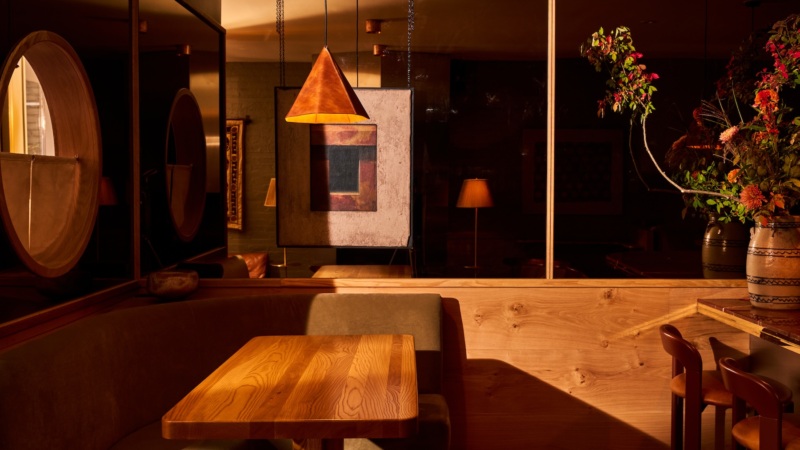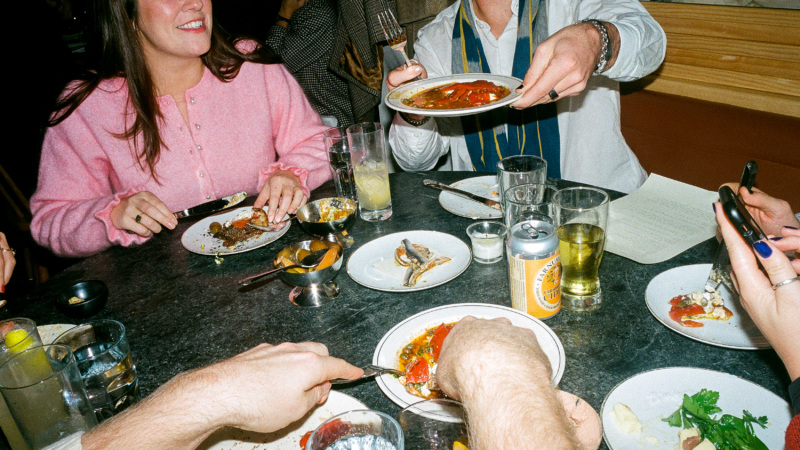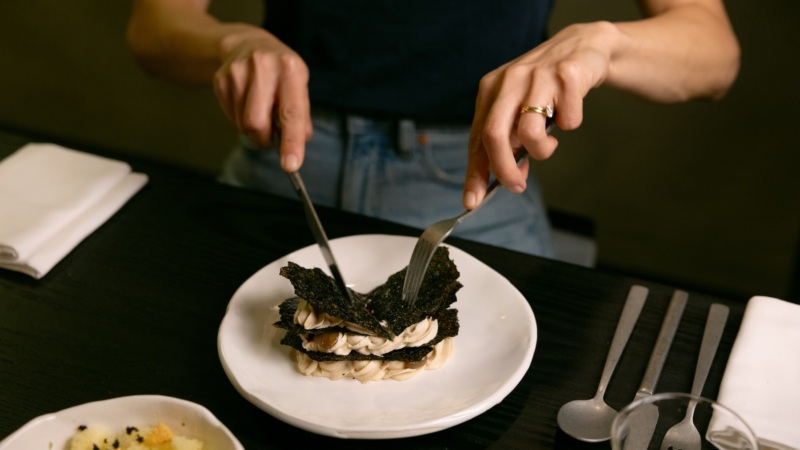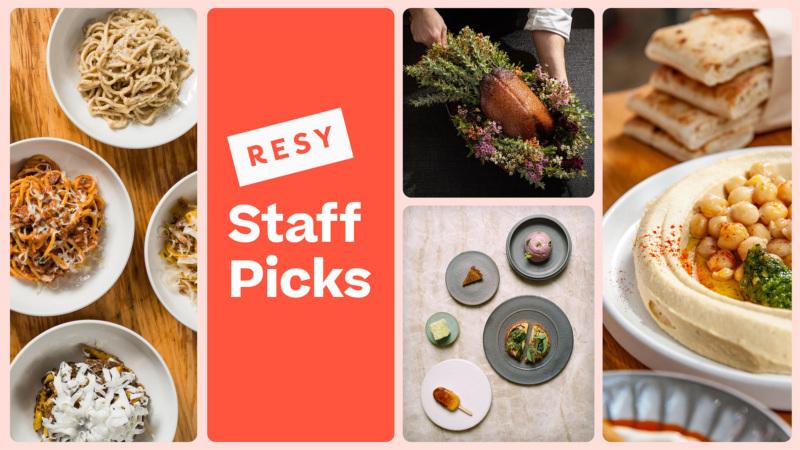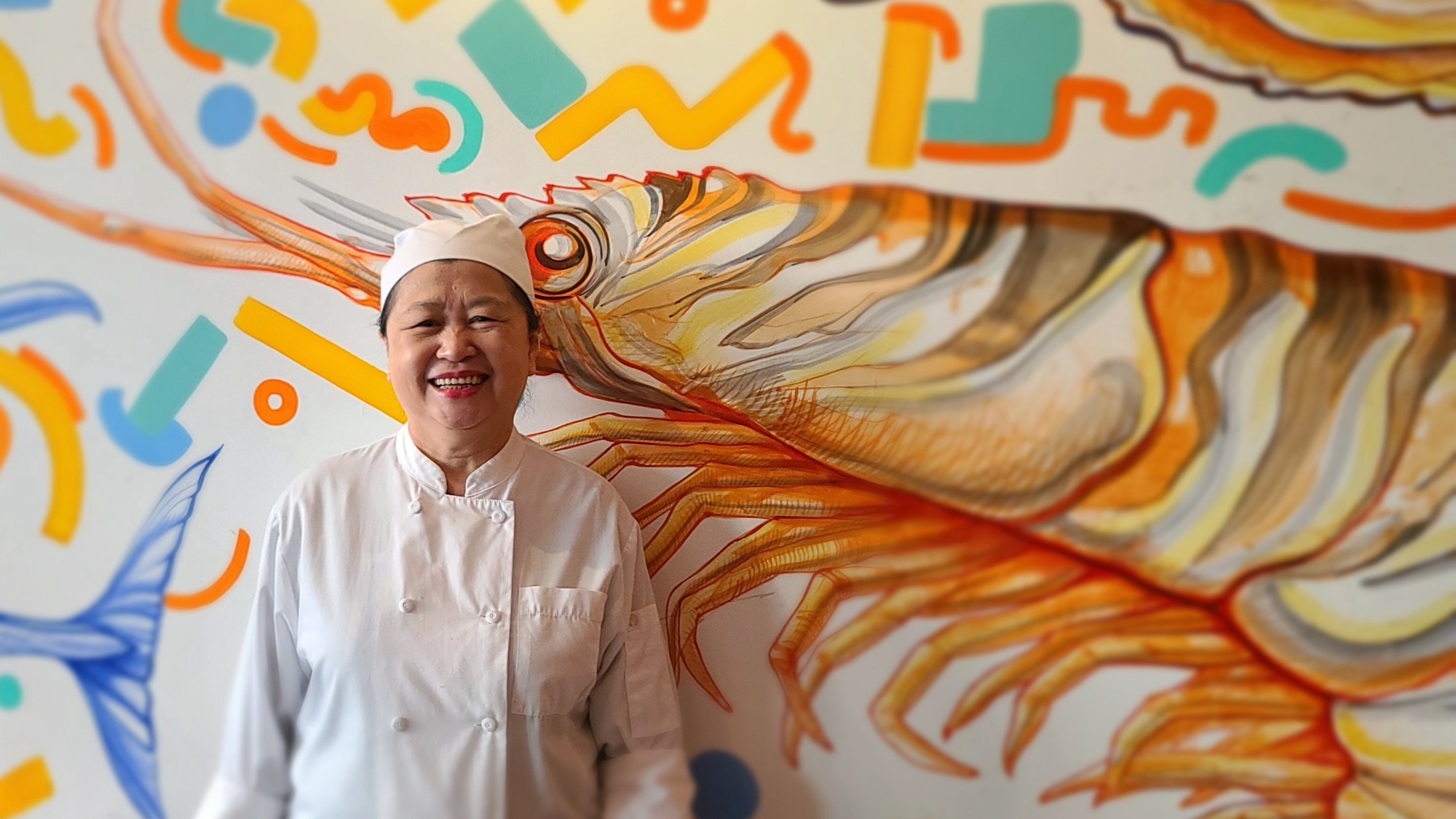
The Veteran Chef Pushing Thai Cuisine Forward at Zaab Zaab Talay
The herbaceous, vegetable-forward cuisine of Thailand’s northeastern “Isan” region has been captivating New Yorkers of late. Appetites piqued last summer when New York Times dining critic Pete Wells awarded three coveted stars to Zaab Zaab in Elmhurst, Queens, praising the depth of its Isan flavors undiluted for foreigners.
More accolades piled up. Inspired by all the success, Zaab Zaab’s owners — Bryan Chunton (who’s from Bangkok) and Pei We (she’s Taiwanese) — transformed another one of their restaurants, Tiger Prawn in Williamsburg, into Isan-focused Zaab Zaab Talay in September. Rough translation? “Extremely delicious seafood.” At the stoves of this cheerful spot with cool beachy murals is irrepressible veteran chef, Kannika Kittipinyovath, a longtime employee of Chunton and Wei’s restaurant group who is better known as “Chef Moi” or “mama” to her entire staff.
- The Resy Guide to the Women-Owned Restaurants of New York
- Meet Saori Kawano, the Woman Who Introduced America’s Chefs to Japanese Knives
- Pig and Khao Chef Leah Cohen’s Favorite Date Night Spots
- 20 Questions with HAGS’ Telly Justice
- ‘Being a Woman Has Made Me More Innovative’: Alex Raij on the Gender Gap in the Restaurant Industry
With fiery Isan dishes like her crave-worthy grilled catfish larb, plus new adventurous brunch offerings, Chef Moi is putting her personal stamp on the menu and clearly enjoying the turned-up spotlight.
“I’m of Isan descent, but I grew up in Rayong, down on the Gulf of Thailand’s East coast, where everyone fished and incredible seafood was everywhere,” says the 65-year old chef. “We lived in the countryside by the beach,” she goes on, as Chunton translates from Thai, “and I learned to cook by watching my mom and my dad. At home we steamed fish and sautéed and stir-fried seafood in a wok over charcoal since we didn’t have gas. Wok cooking over live fire is extremely difficult and it taught me a lot about Thai techniques,” she explains, adding gleefully that she’s still completely in love with her wok. “Yeah, we literally have to pull her away to other kitchen stations!” Chunton chuckles.
When she was 24, Chef Moi got married and followed her husband to Bangkok, where she ran a popular steamtable restaurant serving curries and rice (a populist genre of establishments known as raan khao kaeng). In 1998, looking for more opportunities, she came to New York, and almost immediately got a job at a Manhattan Asian fusion place, moving on through different Thai kitchens in town until eventually joining Chunton and Pei’s group of restaurants, which included Tiger Prawn and Eat Gai. “One day she cooked Isan seafood dishes for us,” Wei recalls. “And we were like, ‘Wow, we must give her her own restaurant,’” says Chunton. “Besides being an incredible cook,” enthuses Wei, “our Chef Moi is a generous soul who supports community charities, like Heart of Dinner and Rethink Food.”
Thai food in New York has come a long way since 1998. As Chef Moi recalls, when she first arrived, there just weren’t a lot of Thai restaurants, period, and certainly no real Thai cooking. “Me and other Thai chefs, we came to the U.S. expecting to prepare our traditional flavors, but the restaurants’ owners, they stopped us, saying Americans can’t take Thai spice and heat. So, we cooked too much pad thai.” She goes on, “What’s more is that women were really appreciated in the kitchens of Thailand for their special touch, their stir-frying and sautéing skills in the wok. But here, it was often the men who looked for work first, which is how Thai male chefs often got the attention, while women had to work that much harder to get recognition.”
It’s all different now, Chef Moi admits, with a satisfied smile. And while she feels the city needs even more authentic Thai restaurants, she’s delighted by Isan cuisine’s new fandom. “It has so many fresh, spicy, bold, herbal flavors,” she says. “And I’m so happy Americans are finally starting to really like them.”
There’s much to love on Zaab Zaab Talay’s menu, from the legendary duck larb ped Udon “borrowed” from the Elmhurst location, to a whole branzino steamed in an irresistible garlicky lime broth, to half a dozen renditions of somtum, the fiery Isan shredded papaya salad. However, when asked to name her favorite bites, Chef Moi didn’t hesitate to single out some dishes she finds especially meaningful — and which she’d love for you to try.
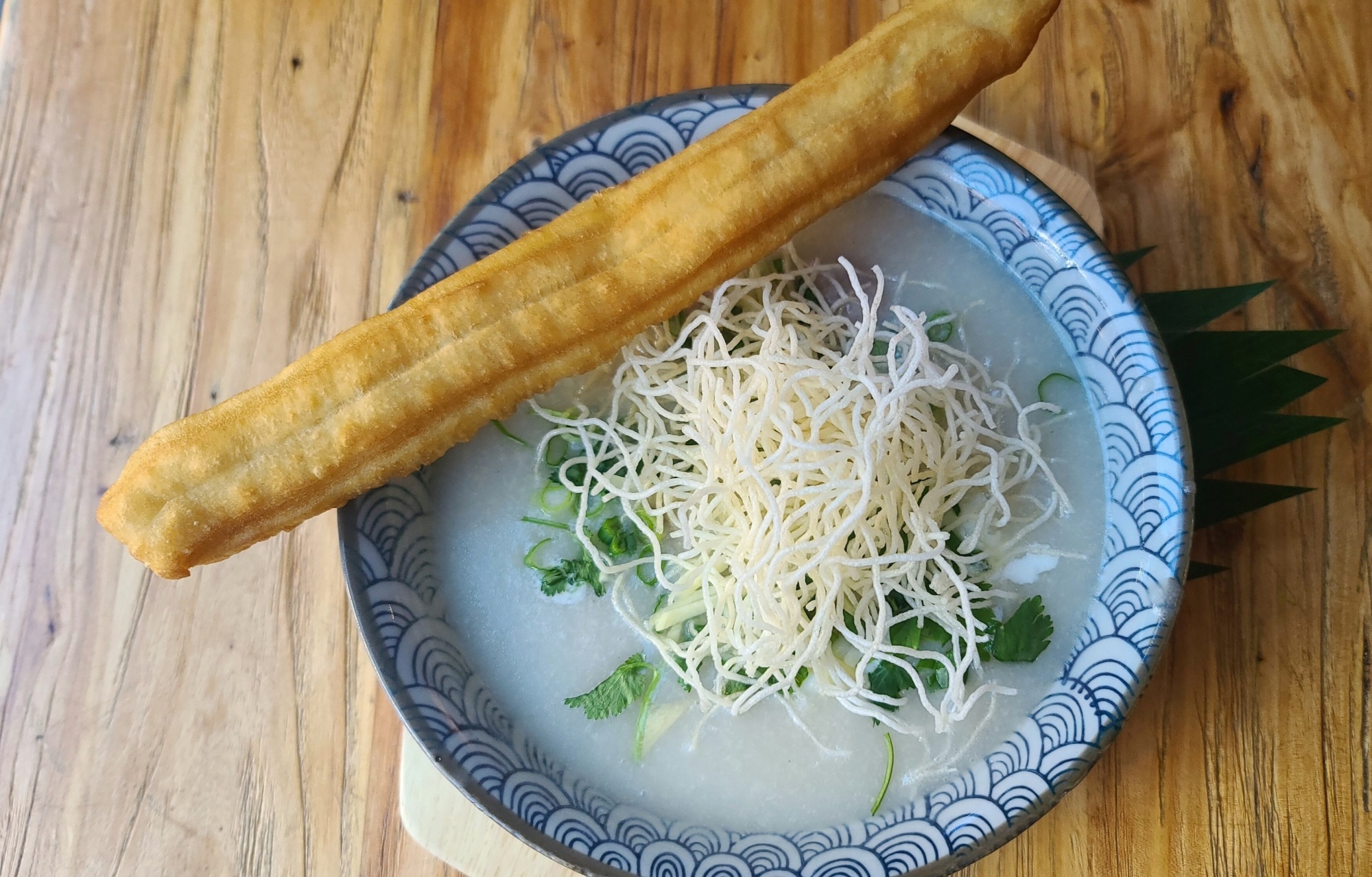
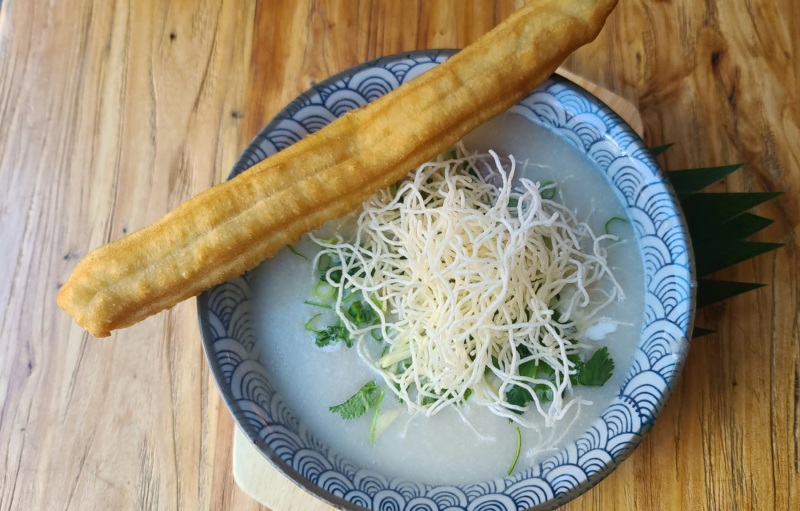
1. Jok Khreung Nai
(Rice porridge with pork meatballs, liver, and egg)
Known as congee in China, chao long in Vietnam, and jok (pronounced joke) to the Thais, this comforting rice porridge is a morning staple in many Asian countries. “In Thailand,” Chef Moi explains, “our entire families, kids to grandparents, love it for breakfast. It’s what I always cook for my daughter. A big pot can feed lots of people and make them so happy, and it’s enjoyed in every part of our country.”
Thai jok, she opines, is more aromatic than the Chinese version because it’s made with jasmine rice, which she cooks at the restaurant every morning for two to three hours with pork broth and her own secret touch of pandan leaf “until it’s silky and smooth.”
Creamy and mild on its own, jok is like a blank canvas for different flavors and garnishes. Of the three types on offer on the restaurant’s brunch menu, Chef Moi recommends Jok Khreung Nai, the one with “the works.” Into each serving bowl, she tucks a plump pork meatball, sliced cooked liver and chewy intestines, plus an egg to be stirred and cooked by the heat of the porridge. The portions land on the table flourished with cilantro, scallion, and zingy slivers of ginger. For some textural fireworks, Moi tops the jok with a crisp tangle of flash-fried rice vermicelli which dramatically puff up in hot oil. Completing the picture: a long Chinese fried cruller.
“We Thais eat it with drops of salty Maggi sauce” she says, “and on the side, some Sriracha.” “But not the California stuff,” co-owner Chunton jumps in, “but the real Thai deal,” meaning, the fearsome fluorescent-red stuff from the Dragonfly brand.
And how do Brooklynites feel about strange pig parts in their breakfast porridge? “People order it a lot! And find it, umm, interesting …” Chef Moi replies, with a mischievous grin.
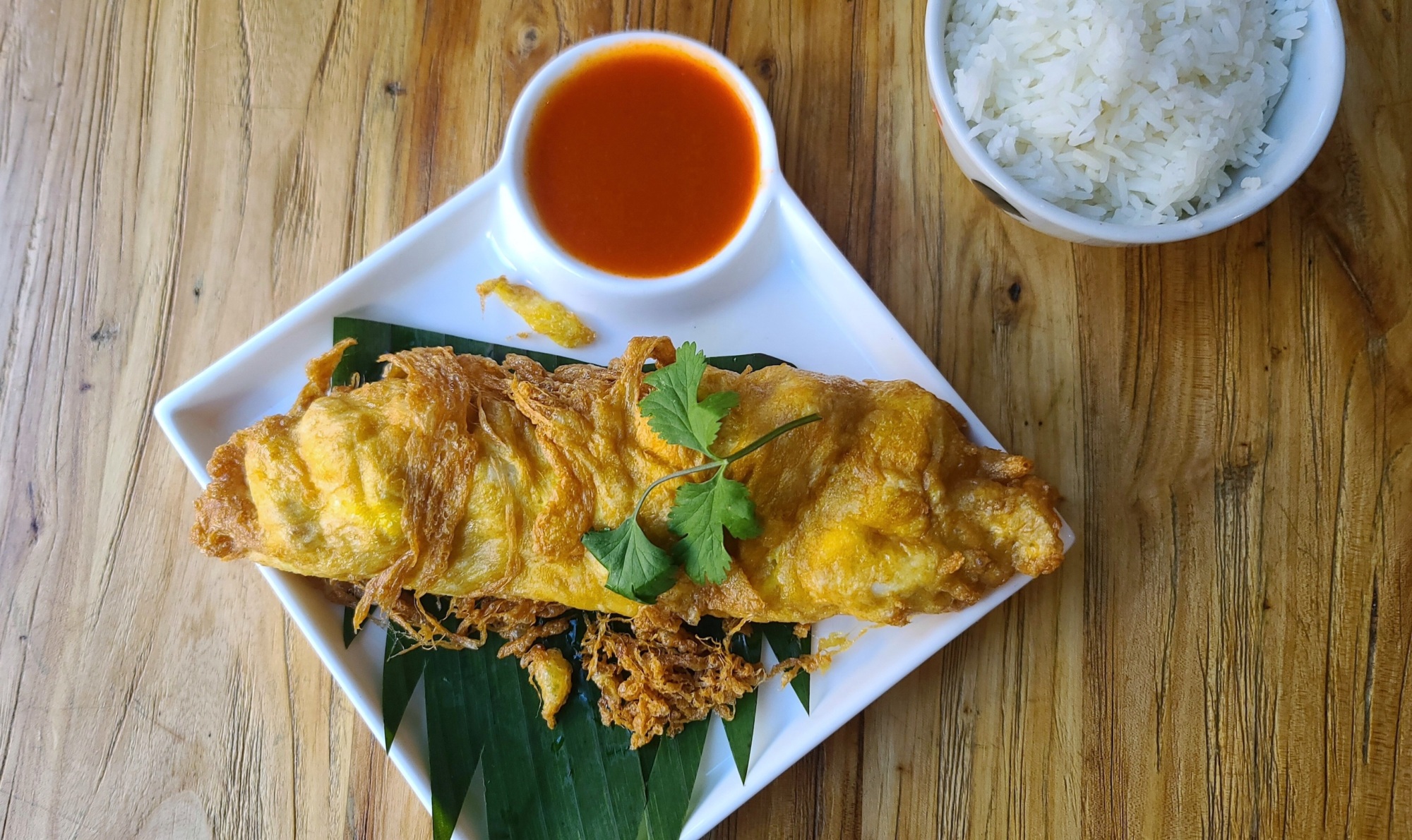
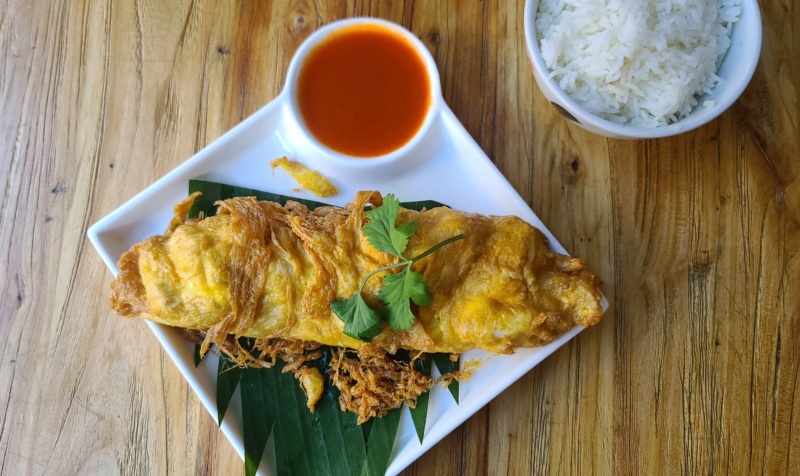
2. Kai Jeow Poo
(Crab omelet)
This plump, deep-fried crab-filled omelet is a Thai street food classic and something of an Instagram darling thanks to the Michelin-starred Bangkok street vendor, Jay Fai, famed for her wok prowess and signature goggles. Chef Moi admits with a wink to having actually spied on Jay Fai in Bangkok to see her omelet technique, but she’s quick to add that, of course, she makes it her way. “Anyway, it’s a familiar dish from where I grew up on the coast, where delicious crab was so plentiful.”
For each portion, Moi scrambles three eggs with dashes of nam pla (fish sauce) and Asian chicken powder for that umami-enhancing effect. In go four generous ounces of pearlescent jumbo lump crabmeat, and the lot meets the sizzling oil in the wok. Moi deftly manipulates the eggy mass with a small sieve and a ladle, shaping it into a roll before sliding her the crisp-edged golden masterpiece onto a serving plate. “Every Thai cook does kai jeow poo differently,” she declares. “Rolling it is my special touch, plus I like it with an extra-crispy exterior, whereas some prefer softer.”
As one eats it, the crunch of the golden shell yields to a plush luxurious interior laced with sweet crabmeat. The accompanying Sriracha sauce almost feels like an afterthought.
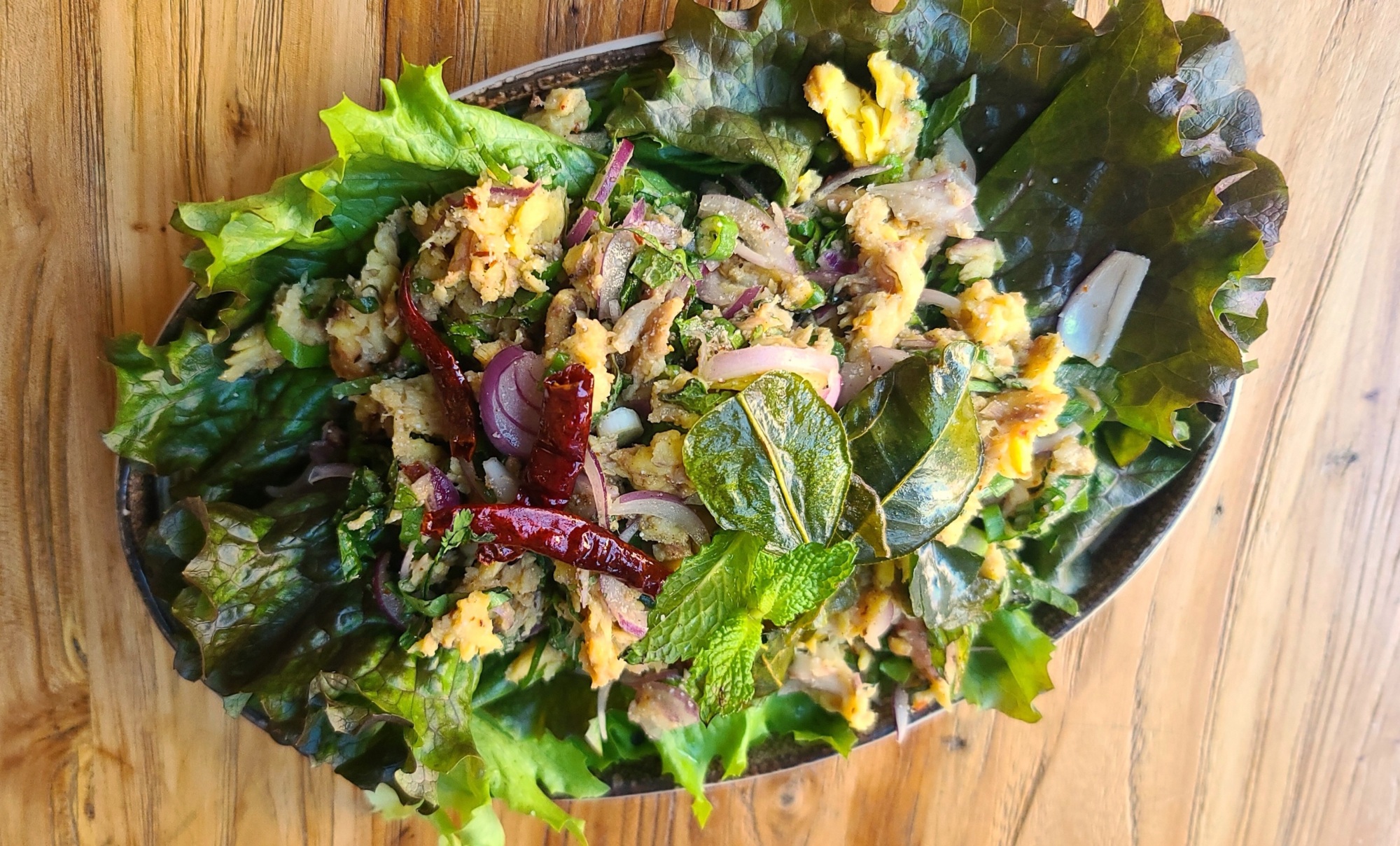
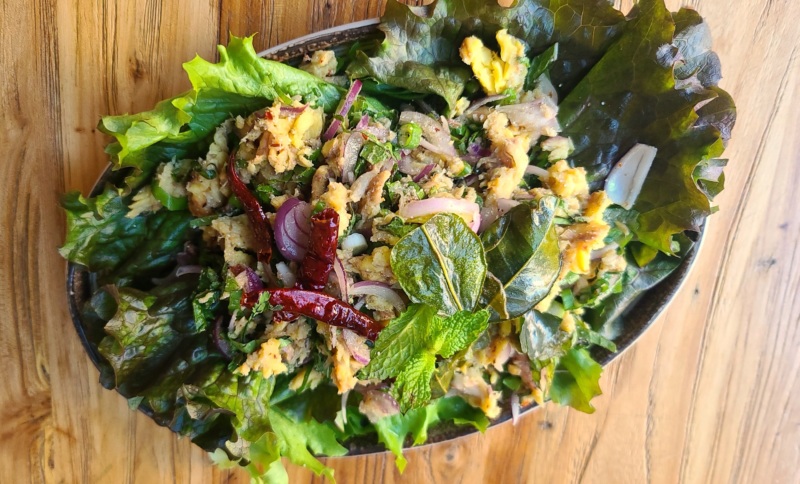
3. Larb Pla Duk Yang
(Roasted catfish larb)
Larb, sometimes spelled laaap and often described as a salad, is an irresistible Isan preparation of minced meat, fish, or poultry, dressed with aromatics and a nutty-crackly finish of khao khua, the roasted glutinous rice powder. In Isan, larb (which is also a staple in bordering Laos) can feature anything from duck to buffalo. “But I think we’re the only ones in New York,” Chef Moi says proudly “to make it with catfish prepared our own special way.”
In a surprisingly laborious process, a whole catfish is grilled over charcoal, deboned, marinated in cumin and garlic, then baked, swaddled in a banana leaf. Before sending it out to the table, Chef Moi tosses the tender, faintly smoky flaked fish with wisps of red onion, nam pla, fried lime leaves, explosive green and red chilies, splashes of lime juice, and a jolt of fresh herbs, including the sawtooth-edged leaves of culantro. “For a good larb, khao khua is the crucial part,” she explains, revealing her own special trick: roasting the rice together with aromatics like makrut lime leaves for an extra flavor dimension.
The resulting dish is a study in counterpoint and proportion, each bite combining delicate pebbles of fish, puckery citrus, pungent nam pla, the intense sap of cilantro, plus that intriguing toasty grit of khao khua on your teeth.
“In Thailand,” notes Chunton (whose black T-shirt says “I Larb You”), “it’s often the men who make larb. But Chef Moi does it better!” Adds Chef Moi: “And my next goal? To put a crab larb on the menu, like the ones we ate in Rayong.”
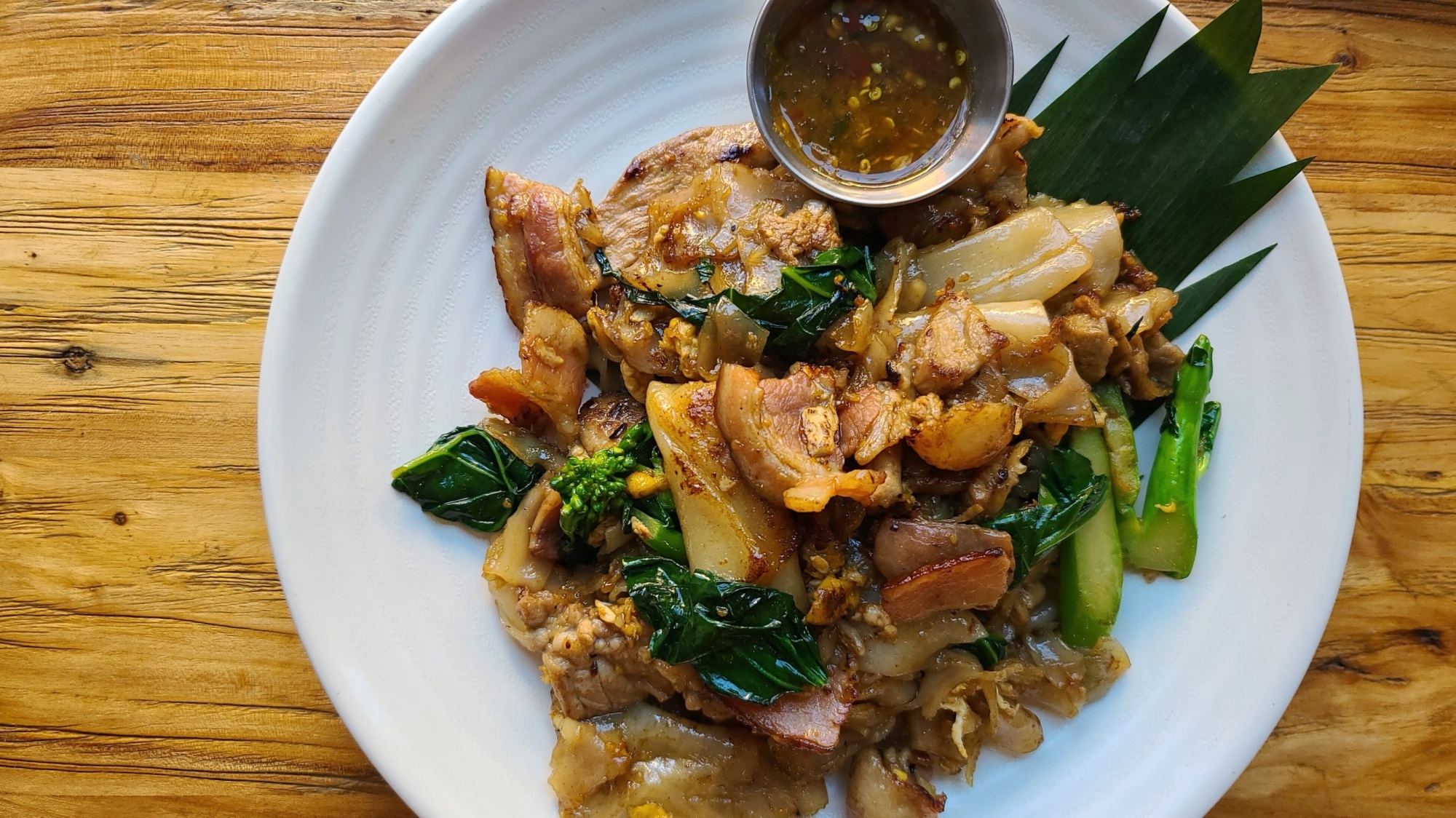
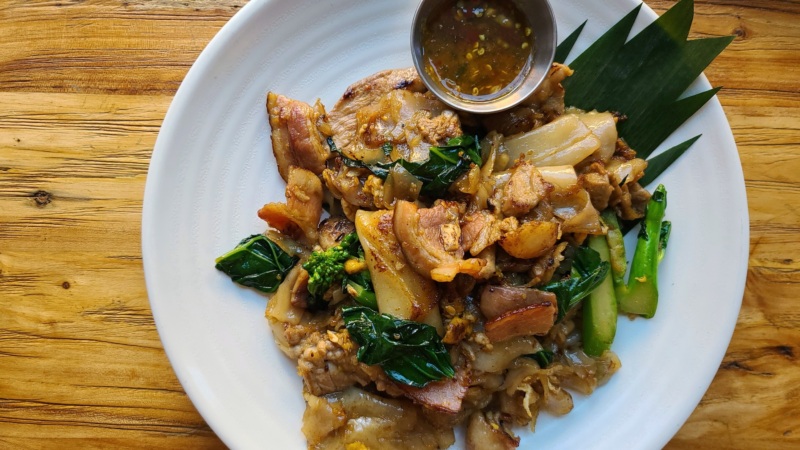
4. Pad See-Ew
(Stir-fried broad noodles with bacon and pork collar)
“As a kid I loved street food, especially noodles,” Chef Moi recalls with a fond, dreamy smile. “Farangs, they always order pad Thai” — she notes, rolling her eyes — “but to many Thai people, pad see-ew is actually better.” A seemingly simple dish, it’s in fact extremely complicated to make just right, so that each ingredient is properly kissed by the wok and caramelized.
Leading us into the kitchen, Chef Moi shows off her supernatural wok skills as the flames leap almost to the ceiling. First, she vigorously stirs around garlic and beaten egg in some oil, then tosses in some meaty bacon — “an American touch, but somehow very Thai, too” — followed by slices of beloved Isan pork collar. A handful of bright gai lan (Chinese broccoli) next joins the wok, and once everything is properly seared, noodles are added, along with some rich dark soy sauce to help the caramelization along.
One key to success, according to Chef Moi, is to use fresh broad rice noodles, sen yai (“big noodles” literally), instead of the usual dried. The second key? The perfect proportion of soft toothsome noodles to other ingredients, so that each forkful brings together different flavors and textures. Each portion is meant to be shared, but the challenge is not to finish it all by oneself.
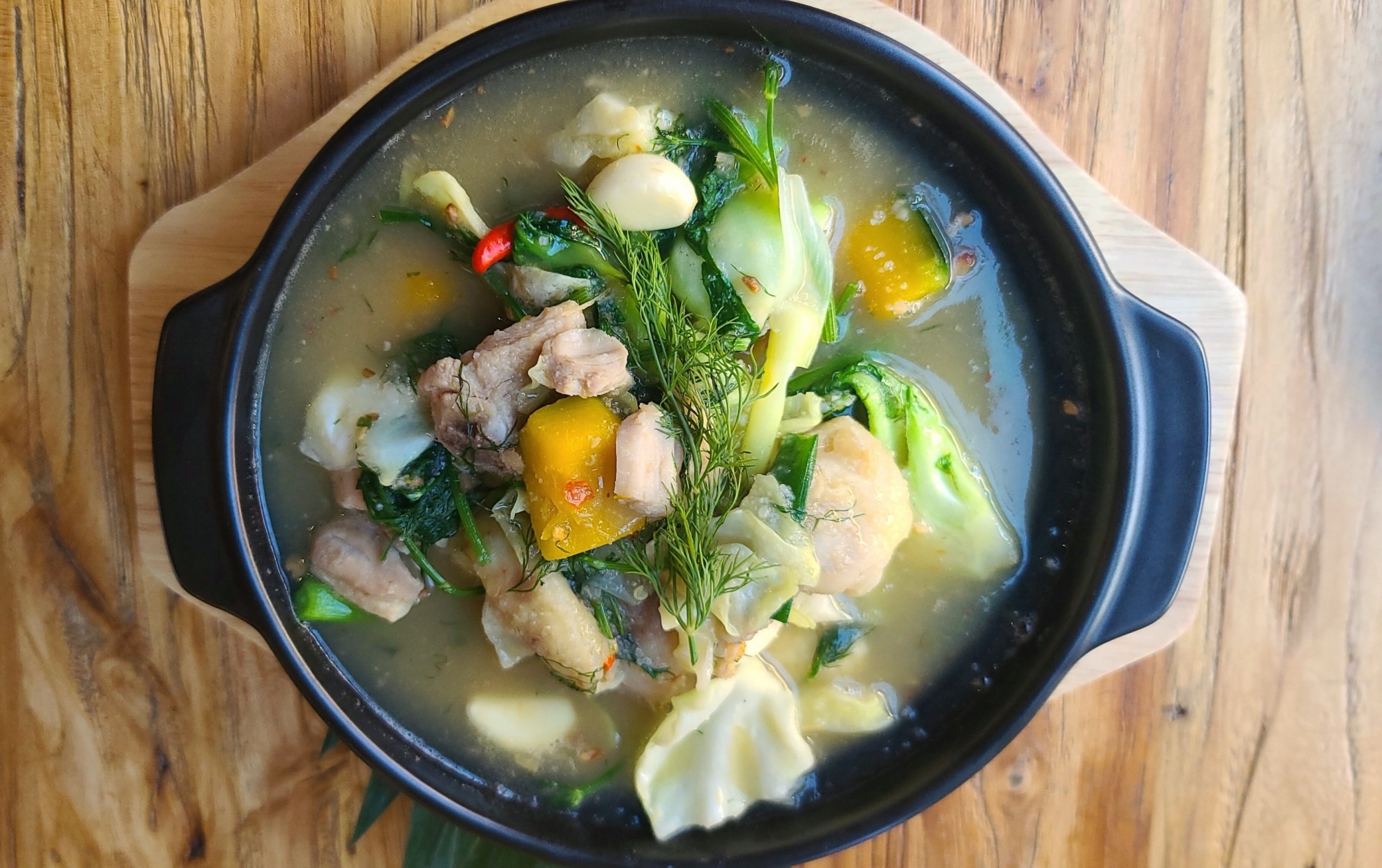
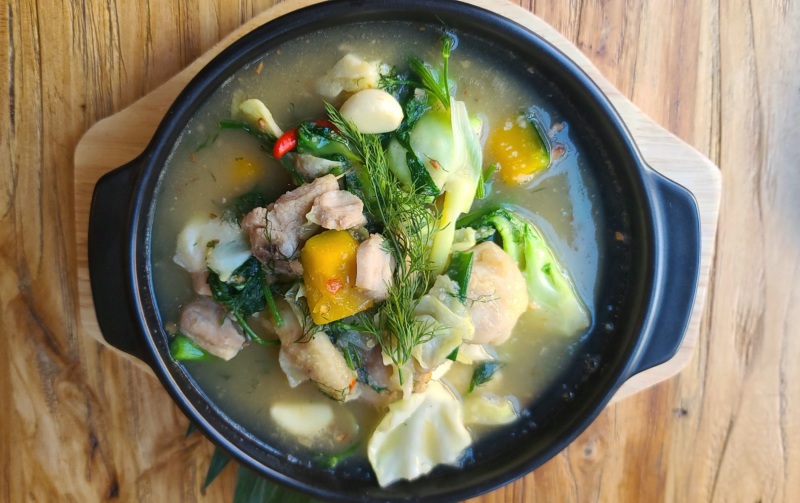
5. Gaeng Om Gai
(Isaan herbal curry)
This northeastern dish (sometimes classified as a soup) will be a revelation to anyone only familiar with the southern-style, palm sugar-sweetened coconut curries of gentrified Thai restaurants. Seemingly thin but weighty in flavor, it’s intensely herbaceous and loaded up with chicken and veggies.
“In Isan,” explains Chef Moi ,“it’s what people eat every day — a classic family dish for which every cook has a personal recipe. All our Isan staff members have their own strong opinions about it.”
Her own recipe starts with a curry paste of galangal, lemongrass, shallots, chilies, garlic, and makrut lime leaves all pounded together, but coarsely, so that bits of aromatics explode on your tongue when the curry is served. On this foundation, Chef Moi keeps building layers of flavor with a rich chicken stock, a funky jolt of fermented fish sauce known as pla ra for extra umami, bone-in nuggets of slightly gelatinous chicken meat from the leg, then vegetables, including Thai eggplant, tender-crisp Chinese cabbage, and chunks of velvety pumpkin, which Chef Moi especially loves. A small bunch of dill (not an ingredient you might associate with Thai cooking but popular in the northeast) added right at the end imparts cooling, fresh-grassy notes. The whole curry is thickened just slightly with a pounded glutinous rice paste that, according to Chef Moi, lends its own homey fragrance and softens the punch of the curry paste and pla ra. As does the sweet pumpkin. “It’s not a fancy dish, but it’s so delicious,” she says. “And it reminds us of home.”
Zaab Zaab Talay is open Monday through Friday from 12 noon to 10:30 p.m., on Saturdays from 10 a.m. to 11 p.m., and on Sundays from 10 a.m. to 10 p.m.
Anya von Bremzen is a James Beard Award-winning book author and journalist based in Jackson Heights, N.Y. Her latest book, “National Dish,” comes out in June. Follow her on Instagram. Follow Resy, too.



